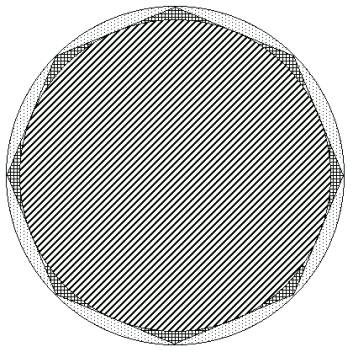Problem H
Ancient
Village Sports
Input: standard input
Output: standard output
Time Limit: 30 seconds
In an ancient village there lived a number of people who liked
different sorts of sports very much. But there was no built-in sports-ground. So
they started looking for places. Ultimately what they found were the surfaces
of the rocks with a shape of a regular polygon. Since the spectators are the
part and parcel of the game, they must have some place over the ground. Again,
officials of the teams must also have some space. They chose the in circle or
striped portion of the regular polygon as the playing ground. They decided to
leave the dotted portion as indicated in the figure for spectators and the
criss-crossed portion for the officials. The diagonally striped portion is used
for playing the game. You are going to help them to find the area of these
portions.
 |
A polygon is regular if all its sides are equal and all its angles are equal. Either of the conditions implies the other in the case of a triangle, but not in general. A rhombus has equal sides but not necessarily equal angles, and a rectangle has equal angles but not necessarily equal sides. So rhombus and rectangle are not regular polygons. |
You are given the area (A) of an n-sided regular polygon. You are to determine the total area for the spectators and the total area for the officials. Assume that π= 2*cos-1(0)
Input
In each line of the input file there is an integer n (0<n<=50) and a floating-point number A (0<=A<=30000). A line with the value of n is less than three, terminates the input.
Output
For each line of input (except the last one) you should produce one line of output. This line contains the serial no of output as shown in the sample output followed by two floating-point numbers separated by a single space. The first one gives the area for the spectators and the second one gives that of the officials. There is also a single space between the colon and first floating point number. The floating-point numbers has five digits after the decimal point.
Sample
Input
3
0.43301
6
2.59808
9
6.18182
0 2.33333
Sample
Output
Case
1: 0.61418 0.17121
Case
2: 0.54352 0.24188
Case 3: 0.53226 0.25314
Problem-setter: Tanbir Ahmed, CSE Department, Southeast University